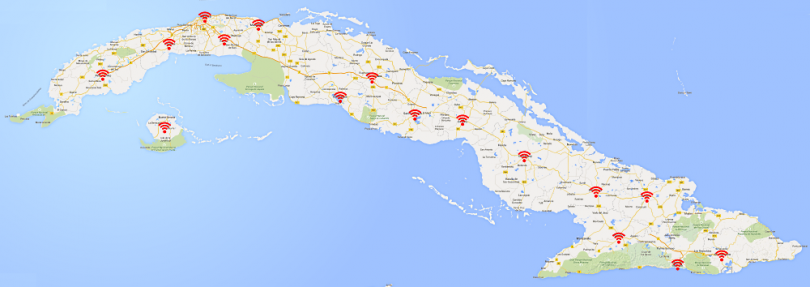aNewDomain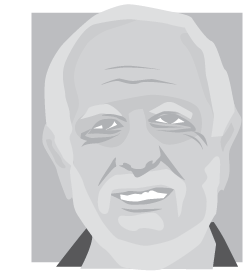 — Luis Manuel Díaz Naranjo, director of communications of the national telecommunications company here in Cuba, has at last announced the Cuban rollout of 35 Wi-Fi access points.
— Luis Manuel Díaz Naranjo, director of communications of the national telecommunications company here in Cuba, has at last announced the Cuban rollout of 35 Wi-Fi access points.
The Wi-Fi access points will accommodate 50 to 100 or more simultaneous users at speeds of up to 1Mb per second, he said, adding that the phone company (called ETECSA, for Empresa de Telecomunicaciones de Cuba S.A.) is permanently cutting its hourly access charge to two CUC.
But the most intriguing thing about this announcement is the map below, which shows the planned Wi-Fi hotspots as distributed throughout the island. Take a close look.
Can you detect the outline of a fiber backbone on the map? I can. And that raises still more questions about the motivations of Cuba commercially, technically and politically, all of which will get clearer and clearer in coming weeks and months.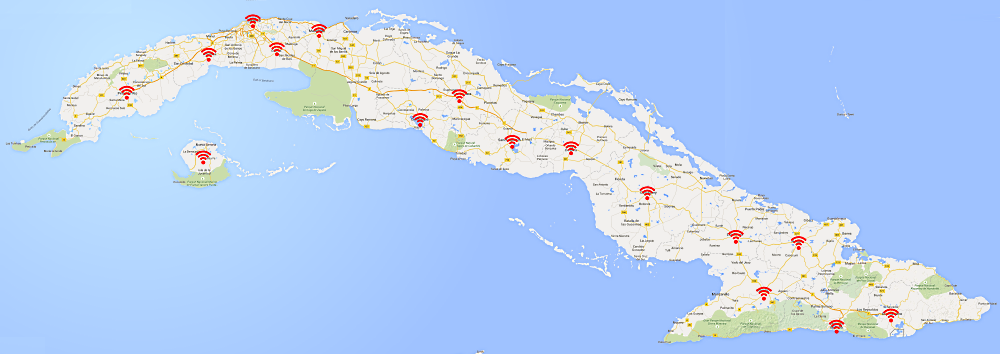
If this Wi-Fi network is to achieve backhaul speeds capable of supporting 50 to 100 simultaneous users at up to 1Mb a second it is clear that some access points are going to be more powerful than others. Assuming they do allow international access, are some linked to the undersea cable and others linked to satellites?
And how is the link up made from the access point to the international connection; is it via fiber, copper, wireless or some combination? The answer could and probably does differ for each access point.
As such, this suggests the outline of a future national fiber backbone.
I’ve seen presentations depicting a four-phase planned fiber backbone that is intended to connect Cuban provinces. Many of them are shown on the Wi-Fi access point map above. Eight are included in the first phase of the backbone.
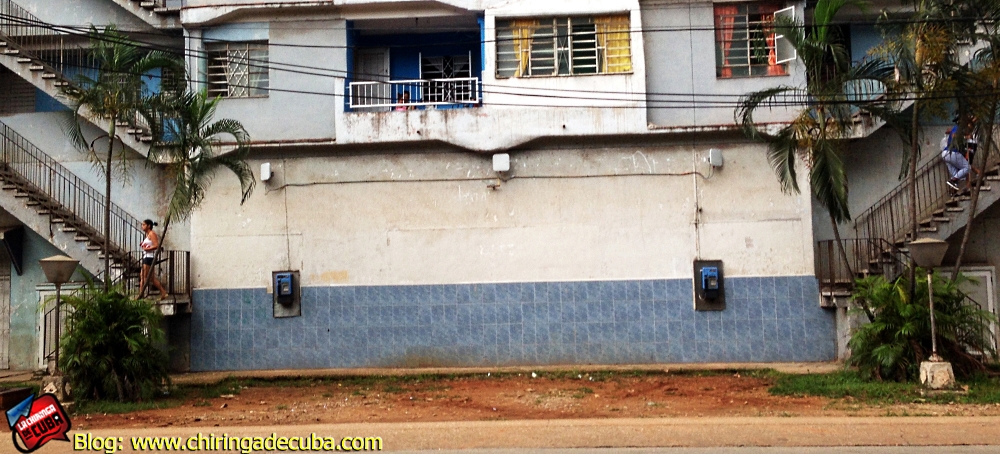
The Cuba-Huawei connection
Further, Carlos Alberto Pérez says he has spotted the equipment at one of the Havana locations. Note the three Huawei antennae in the photo above.
Huawei has been bidding against U.S. companies for this win, and it is pretty clearly making headway.
According to Cuba’s minister of finance and prices, Lina Pedraza Rodríguez, Cuba is in “very advanced” negotiations with Huawei. She is likely referring to the wireless and backhaul equipment for the Wi-Fi access points or a possible upgrade to DSL of Cuba’s telephone central offices. That was suggested by the announced plan to make low-speed broadband connectivity available to half of the homes in Cuba by 2020.
Another possibility: Huawei could be powering the plan to connect all Cuban schools or even a national fiber backbone.
But who will pay for it all?
And what will ETECSA’s selection of Huawei mean for U.S. telecom service and equipment manufacturers who are vying for the opportunity to do business in Cuba? Surely ETECSA folks, like the ones who have been building out unauthorized Wi-Fi LANS, know the wide array of options out there.
Will Cuba block access to some sites and services?
Freedom House ranks the Cuban Internet as not free for political and cultural reasons, but there is also the possibility of blocking access for economic reasons.
For example, at the time of this writing, Skype and FaceTime are blocked in Cuba. Whether that is solely to protect the ETECSA monopoly’s phone call revenue or to limit Cuban access to communications outside the island remains to be seen.
By the way, Skype recommends a 100Kbs upload and download speed with reasonable latency. As Doug Madory has shown, the Cuban undersea cable links have a latency of around 200 milliseconds. On such a network, Skype would potentially work for international calls from cable-connected access points.
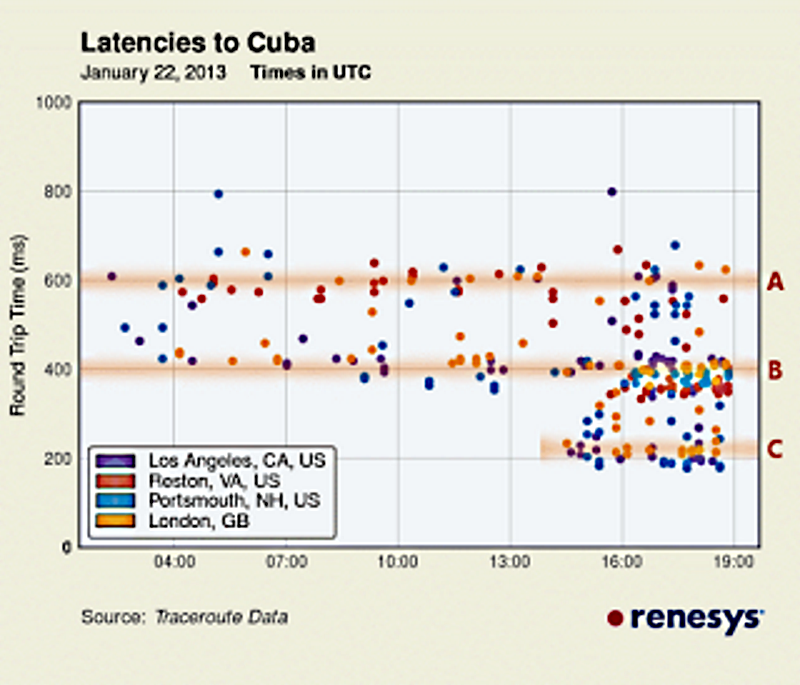
What’s the goal here?
Developing nations typically face a tradeoff when they elect to modernize and/or open up their countries to digital communications.
My favorite example of this is India during the mid 1990s. It was illegal, then, to make voice calls over the Internet through VoIP. Yet shops offering the service openly advertised in the newspapers and brazenly displayed signs on their storefronts.
It’s easy to imagine the same kind of situation in Cuba.
But, just because this seems like a major rollout by Cuban standards, remember that in reality it’s just a mere drop in the bucket. Whether plans to build a Wi-Fi access network or a fiber backbone or anything else signifies a Cuban policy shift is still unclear.
Cuba’s current government goals could be to keep the seat of power and maximize ETECSA profit or government profit. It might be to line the pockets of ETECSA investors or to simply provide affordable, modern Internet connectivity to Cubans.
The goals might be none, some or all of these things.
As Cuba’s telecom plans emerge and take shape, so will its motivations and goals become clearer for Cuba at large. I’ll be watching for you.
For aNewDomain, I’m Larry Press.
Ed: A version of this story ran on Larry Press’ laredcubana. Read it here.
Images in order: Wireless Router by Sean MacEntee via Flickr; Cuba Wi-Fi Access Points by Larry Press; Havana Wi-Fi courtesy of Chiringa De Cuba; Latencies to Cuba courtesy of renesys.

